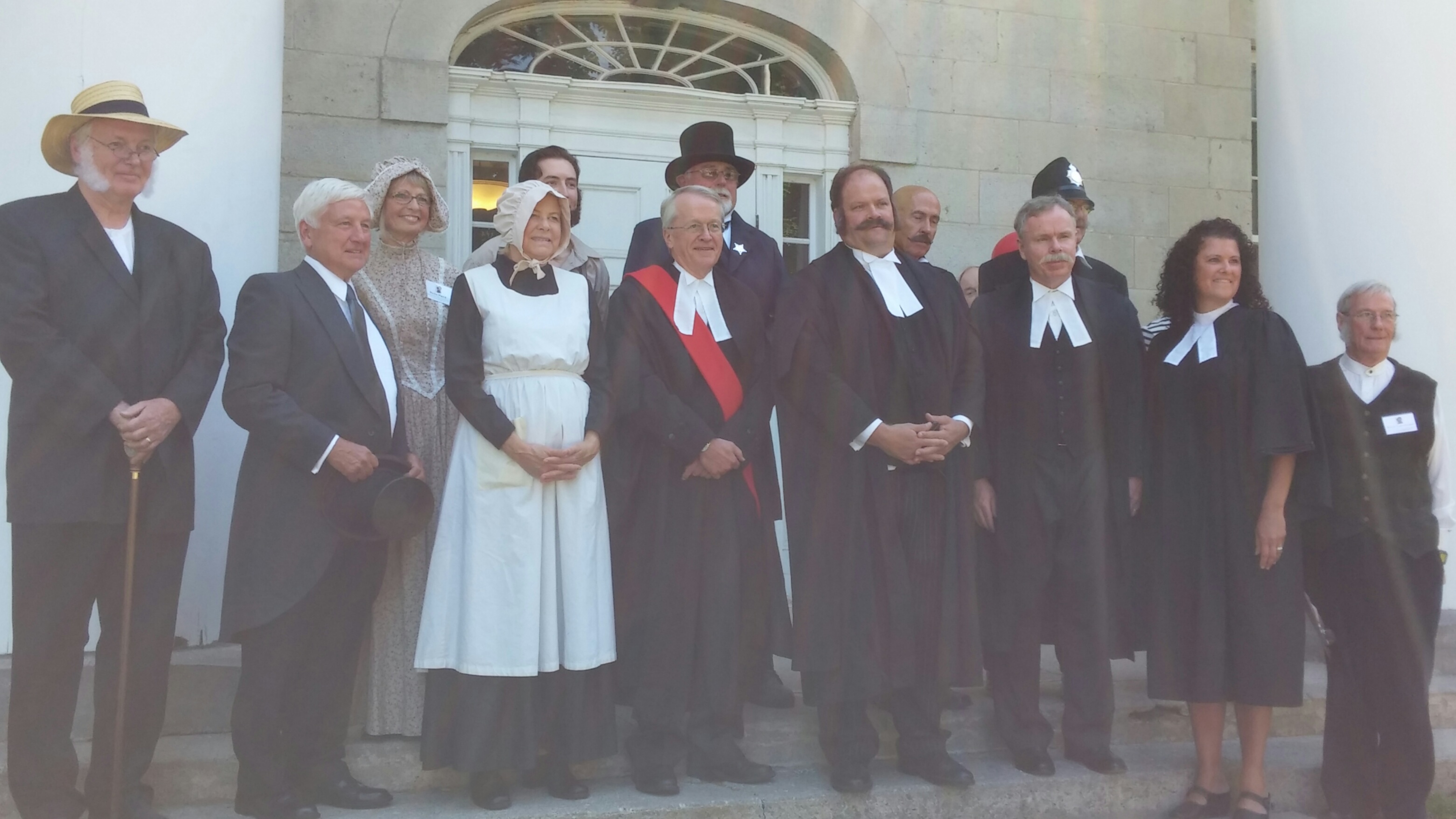In the very courtroom where a 19-year-old John A. Macdonald won his first legal victory in 1834, justice may have been denied 50 years later when two young men were hanged for a grisly murder.
In a thrilling re-enactment of the Lazier murder trial which still haunts this tranquil Prince Edward County town, Justice Robert J. Sharpe from the Ontario Court of Appeal presided at the re-enactment of the trial in the same courthouse where the men were tried and hanged more than a century ago.
Sharpe is the author of The Lazier Murder: Prince Edward County, 1884. He also crafted the play which drew a packed courtroom. Proceeds from the event went to support a bronze sculpture of John A. Macdonald, who will be depicted presenting his first court case as a young lawyer in Picton in the same courthouse. The project, by famed sculptor Ruth Abernethy, will be located in downtown Picton in front of the Armoury.
The murder trial was based on a botched robbery attempt, as Peter Lazier was shot in the chest at a Prince Edward County farmhouse in December, 1883. Police arrested three local men who all proclaimed their innocence throughout the ordeal. Two of the men, Joseph Thomset and George Lowder, were quickly sentenced to death by a jury of local residents the following spring.
Sharpe presided as judge for the re-enactment, playing the role of Justice Christopher Patterson. Justice Richard Byers took on the role of Edwards Merrill, who was mayor of Picton at the time. William McDowell played defence attorney Dalton McCarthy Jr., and Patrick Hurley acted as the prosecutor, Roger Clute. Before the trial the audience was encouraged to be boisterous and prejudicial, to echo the historical reality in the court house during the actual trial.
Much of the case hinged on footprints in the snow found outside the farmhouse where Lazier was staying at the time. The tracks were followed by local volunteers who had already set out over night to try and track the killers on their own — but they left more than a dozen sets of various boot markings in the vicinity. Despite this obvious confusion of footprints in the snow, Belleville Police Chief Hugh McKinnon later compared the boots of the prisoners, Thomset and Lowder, with the tracks he could find after he arrived. He determined that Tompsett’s matched, but Lowder’s did not. In the end, both men were found guilty by the jury and sentenced to death by hanging.
Not all the people in the community were pleased with the decision, with many believing that at least Lowder was innocent. The mayor even wrote to Prime Minister John A. Macdonald to spare the men from the gallows, declaring that the evidence wasn’t compelling enough to warrant the drastic sentence.
However, as was customary at the time, the reply from the government was that the law should be allowed to take its course. There was no court of appeal at this time in early Canada’s history.
Despite the fact that the evidence seemed sketchy for at least Lowder, both men were hanged on the newly constructed gallows behind the courthouse on June 10. One died in five minutes, the other took 14 minutes.
A local historian, Peter Lockyer, led a tour through the tiny cells and the gallows, which are still preserved today. While both men were supposed to be buried on site, Lockyer said that a recent crude grave marker was found at Glenwood Cemetery in Picton. Etched into the rock was Lowder’s name and the words “Hanged. 1884. Unjustly.”
After the re-enactment participants were invited to tour the jail and the gallows where the men were hanged. Never again was a death sentence imposed at the Picton court house.
After the re-enactment a reception followed at The Waring House in Picton where Justice Robert Sharpe answered questions about the trial and re-enactment. Judge Sharpe said that in fairness to Macdonald, who did not prevent the executions, it was a standard government belief at the time to almost always defer to the jury, who it was believed would know more about local issues.
 Leaders and Legacies Canadian leaders and leadership stories
Leaders and Legacies Canadian leaders and leadership stories


